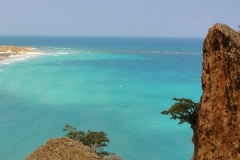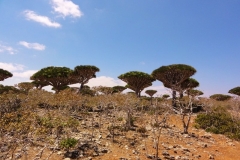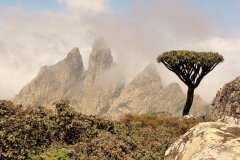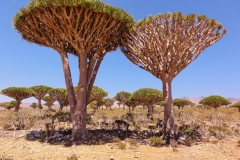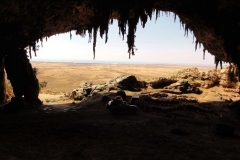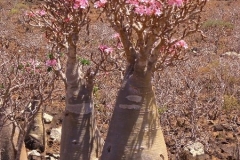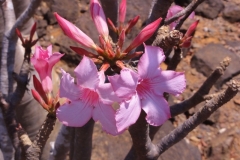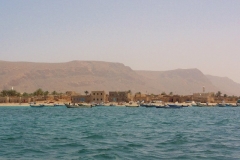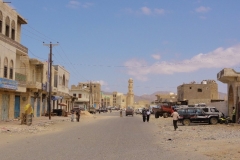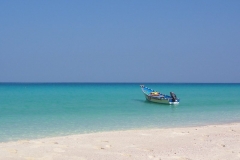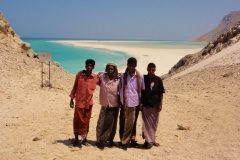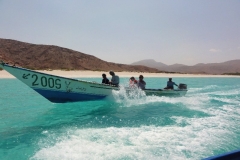Socotra
Island of Dragon's Blood Trees
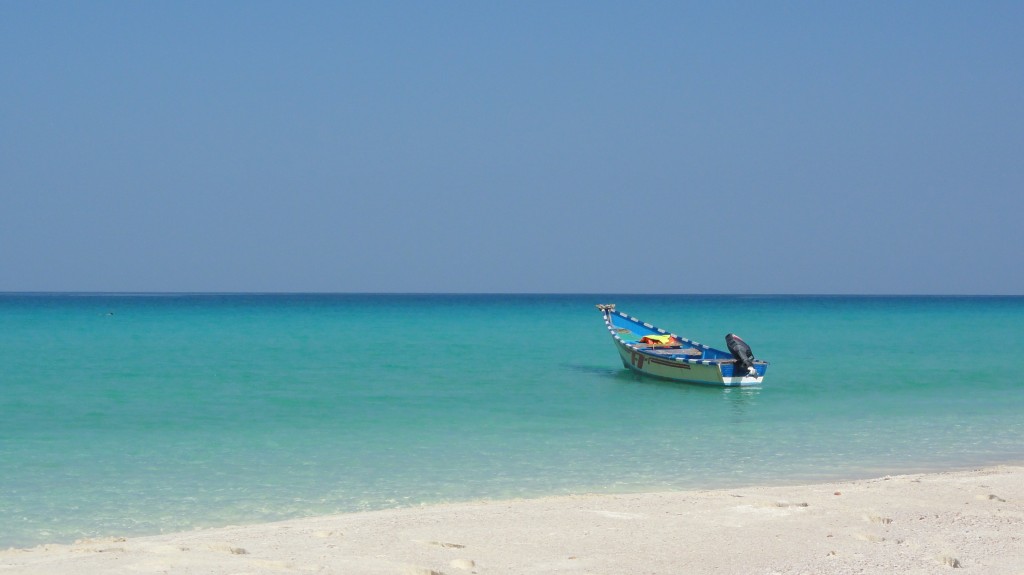
Socotra is a place of legends and myths. In ancient times, the Phoenicians – the seafarers from what is today Lebanon – believed that it was on this mysterious island in the Indian Ocean that the phoenix lived.
It was also thought to be the home of another mythical bird, the giant roc, which featured in the voyages of Sinbad the Sailor. According to legend, the secret to eternal life lay hidden in a cave somewhere in the island’s mountainous interior – but dragons dwelt there too!
A visit to the rocky island makes it easy to understand why people thought it was home to such strange creatures: the unusual plants and trees which grow here are very different from those elsewhere in the world.
Lying just over 500km off the south coast of the Arabian Peninsula, the Yemeni island of Socotra has been dubbed ‘the Galapagos of the Indian Ocean’.
Like some lost world, it was separated from the mainland for 60 million years and today about 270 of the 850 or so species of plant that live here are unique to the island. Some plants that grow here died out elsewhere tens of thousands of years ago.
Perhaps one of the most striking plants on Socotra is the Dragon’s Blood Tree. For many years, its red sap was sold as dragon’s blood, no doubt fueling the mysterious island’s reputation as being a place where such creatures lurked. You can still buy the sap today in dried form, either in the sleepy capital Hadibu, or from locals out in the country.
These bizarre trees are also found on the Canary Islands, Cape Verde, Madeira and the Azores, but only on Socotra do they grow in such numbers with ‘forests’ of them covering the stony landscape.
The island is also home to Bottle Trees and Cucumber Trees – the latter being the only cucumber plant that grows in tree form. Over the centuries, the island’s plants have been a source of highly prized wares such as aloe, frankincense and myrrh.
Yet, despite its reputation as a sort of Garden of Eden, Socotra is not as green as one might imagine. As my plane descended towards the island’s small airport, I was surprised by how barren and dry the land looked. In the coastal areas at least, the unusual plants and trees are dotted across rocky terrain rather than forming the sort of lush jungle I had half expected.
The coastal plain rises steeply to a plateau and then, higher up still in the mountains, the landscape does become greener. The Hajhir Mountains form the backbone of the island and provide fabulous hiking country, the highest peak being Jebel Dryet at 1503m.
Despite the altitude and clouds swirling around the mountain tops, by mid-morning, even in March, temperatures rise quickly and the sun is deceptively intense.
The island, which is some 130km long and 35km wide, is surrounded by warm turquoise seas. The land meets the waters of the Indian Ocean either as steep cliffs or as wide sandy beaches of incredible beauty.
These almost white expanses are empty except for colonies of tiny white crabs which scuttle in to their burrows as soon as they sense the footsteps of an approaching visitor.
As they have done for centuries, local fishermen fish the rich waters round the island where the wide variety of species also makes it a paradise for snorkelling – but beware, there are sharks!
The apostle Thomas is said to have been shipwrecked here in AD 52 on his way to India and to have used the wreckage of the ship to build a church.
In the centuries that followed, more were built by the Assyrian Church of the East. There were still churches on Socotra when Marco Polo stopped off on his way back from China in 1295, but by the sixteenth century the island had been converted to Islam.
From 1876-1967, Socotra was under British administration, before becoming part of Southern Yemen and eventually in 1990 part of the reunited Yemen.
Today, there are some 50,000 people on the island, with about 8,500 living in Hadibu. The inhabitants even have their own language – Socotri, a Semitic tongue related to the ‘Modern South Arabian’ languages spoken in southern parts of the mainland.
Like all the people I encountered in Yemen, the island folk of Socotra were friendly and welcoming. It is truly a stunning place and one which holds special memories for me.
If you enjoyed this album and would like to be kept up-to-date of similar postings, just click on the Facebook ‘like’ button.
RETURN

